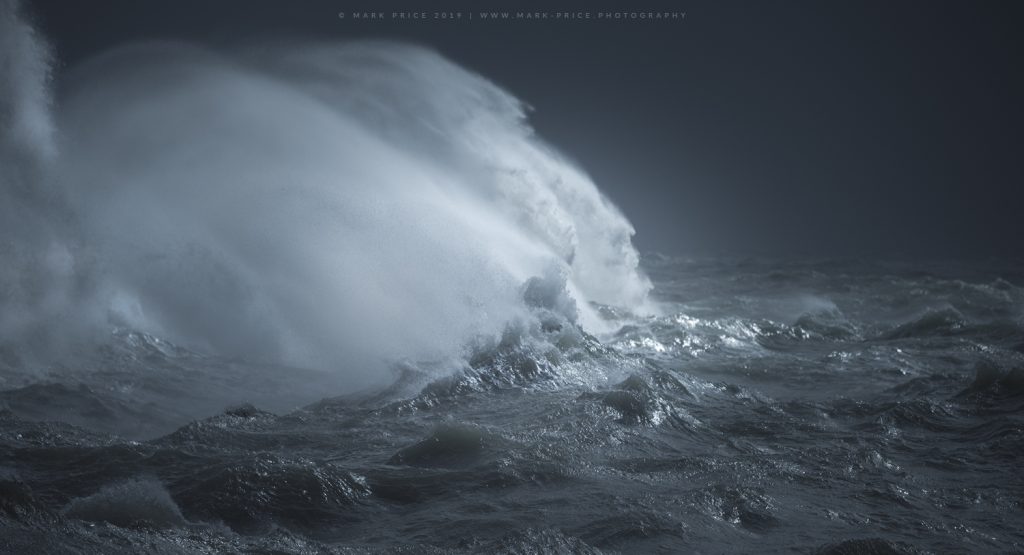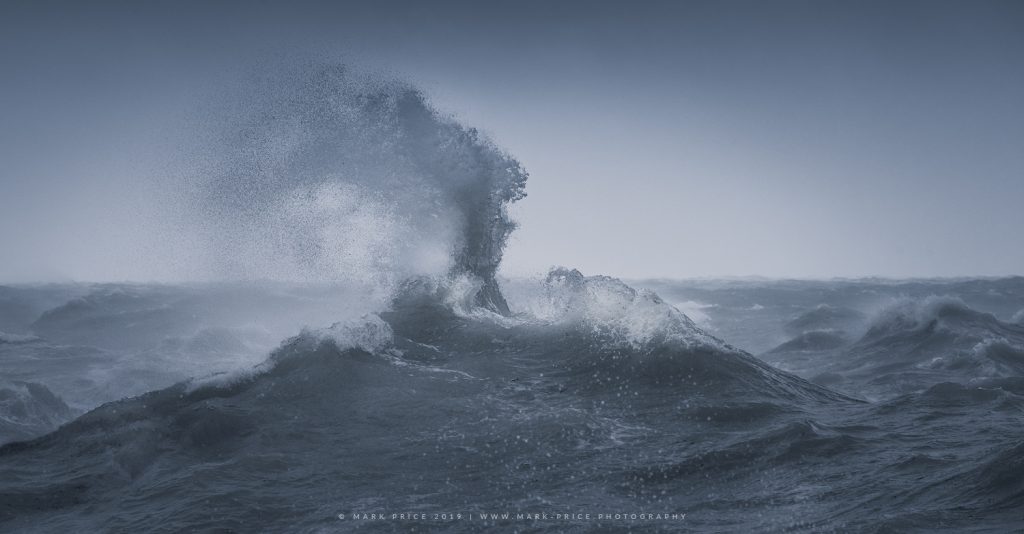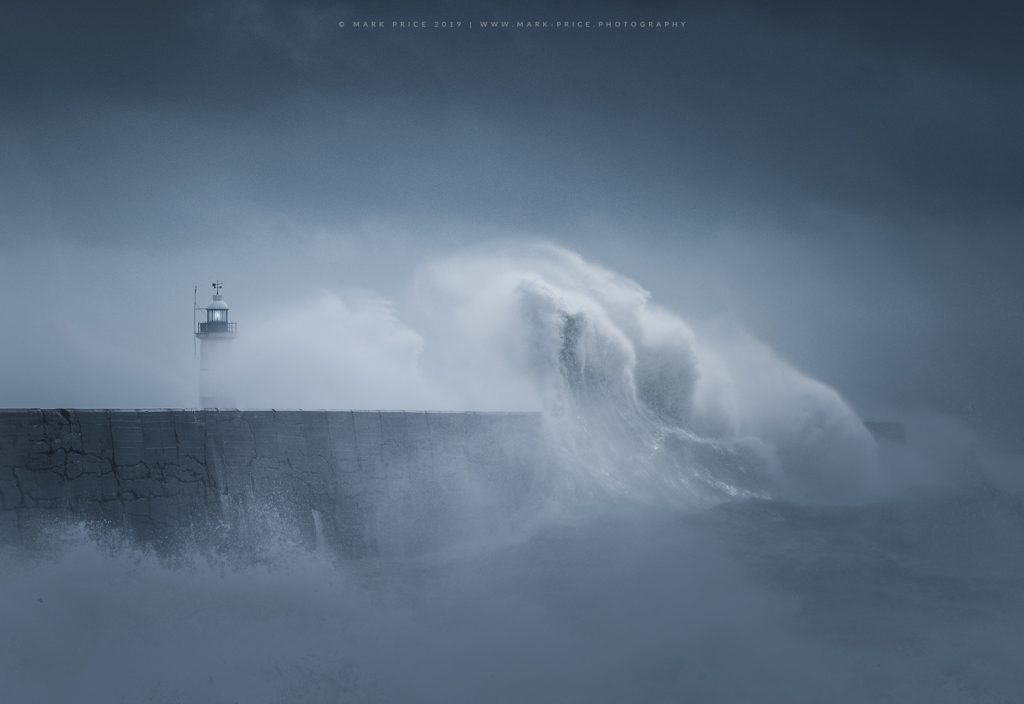So, I thought I would take a bit of time to write a few articles on my blog here, outlining some creative, and technical thoughts about an image, or series of images that I’ve created – hopefully they’ll be helpful to someone else from a curiosity / learning perspective.
This first post covers the subject of ocean / wave photography, and specifically during inclement weather. I’ve wanted to create a set of these for a while now after seeing a couple of wonderful portfolios of this type of work from other photographers – I love to be inspired by other people’s work, but also prefer to spin my own ‘brand’ of such work, rather than simply replicate another artist’s creative output.
Here on the South Coast, we are blessed with the ocean close to home, I live approximately 30 minutes drive from the location that I captured this series of images from. Here are the images we are talking about :
All of these images were captured in the harbour area of Newhaven – the key to successfully shooting this type of image relies on a number of factors :
- Very strong winds ( 50mph + in this case )
- Some moments of light
- A long focal length lens
- A fast shutter speed
- A harbour / jetty that the waves can ‘bounce’ off
The first couple of things in that list, relating to weather, are important – without big wind speed, and consequently big waves, this type of image is unlikely to happen. It’s worth venturing out on those very stormy / rainy looking days!! Apps like ‘Windy’ or the BBC weather website will show you the possible wind speed, as well as likely cloud cover – some breaks in the cloud / rain are also important facets of capturing these type of images – often it is a case of just going to a location and seeing what develops with the weather as far as light is concerned – strong winds though, need to be well indicated in a forecast.
Using a longer focal length for this type of photography is good for a couple of reasons – A) Safety – standing back from the shore when this type of storm is in progress is advised – the sea moves quickly, and it is not unusual for ‘rogue’ waves to travel up the beach much more than the usual flow. B) The elements in the frame appear larger, or compressed with longer focal lengths – I used a 100-400mm lens for all of these images.
Shutter speed is another critical facet to this type of shoot – I opt for shutter priority, with auto-iso, but set an upper limit of iso 1600 in my camera – I was wanting for a shutter speed of around 1/1000 and above in these instances – the shutter speed needs to be fast enough to ‘freeze’ the water movement. It’s also worth taking a look at what aperture those settings provide – too wide an aperture, and the depth of field will be too shallow – somewhere around F10 to F13 was good for this particular day. I was shooting handheld to allow me to move quickly, and at 400mm, even with some vibration reduction, the shutter speed needs to be at least 1/800 of a second ( double the focal length ). I do wonder if a monopod might help for this type of shoot, and I may try the next time I venture out to shoot a stormy ocean.
The reason that the waves at Newhaven work so well for this type of photography has a lot to do with the harbour wall there – the sea crashes into the wall, and large volumes of water then bounce on back away from the concrete, creating this maelstrom of waves bouncing around – it is possible to watch the waves hit the wall, then bounce away and lift off the water surface, creating the moments that you see in this set of photos.
I will say that there is a huge element of trial and error in these shots, I quickly took 600 odd frames over an hour’s shooting, and there were 4-5 images that were to my satisfaction – a good few memory cards, some persistence, and the willingness to get very wet are crucial ‘ingredients’ in the recipe for making art like this. I should also add an important point – get a good rain / water cover for your camera – it will get drowned otherwise, and even with weather sealing, salt water is not going to do your kit any good at all – I was surprised at the number of photographers at the beach yesterday with no covers at all – my gear gets a fair bit of punishment, but the sea will kill it – quickly, and if you happen to get hit by a rogue wave, without a rain cover, the gear has no chance at all.
I’ll start to add some regular stories here about how, and why I shoot my images in future – let me know if you find them useful, or feel free to share the post ..
All the best
Mark







